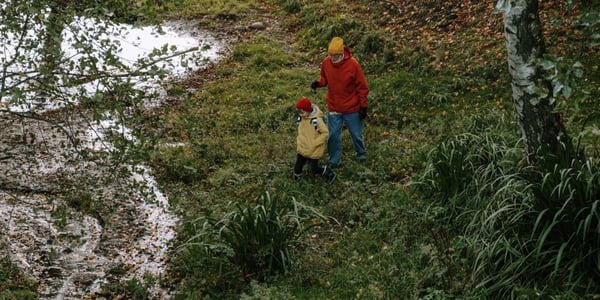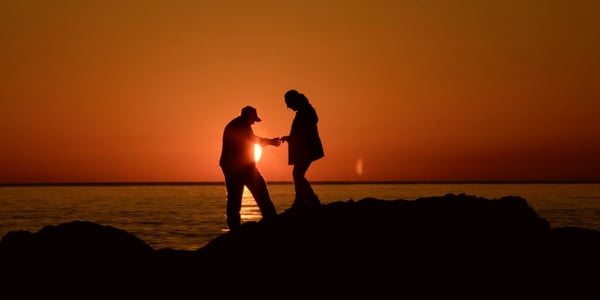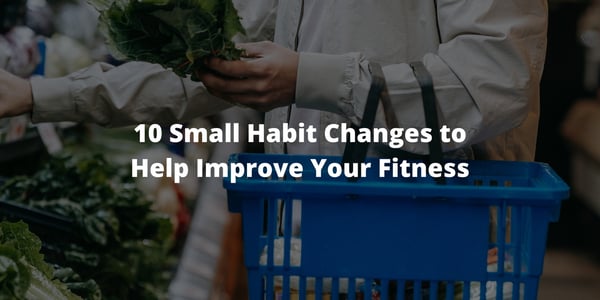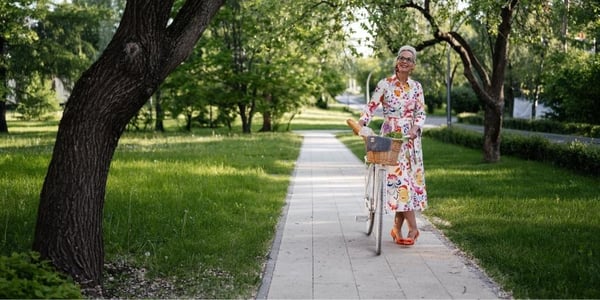In a world that is constantly evolving, it is no wonder that we crave stability and predictability...
Preventing Falls: Your Mindset Matters
The headline says it all: "Ivana Trump, ex-wife of former President Trump, died from fall: Medical examiner". Found at the bottom of a set of stairs, the 73-year-old victim's cause of death was ruled by the medical examiner determined the cause of death was "blunt impact injuries to the torso sustained as the result of a fall."
The risk of falls for older adults is significant. The Centers for Disease Control reported that in 2018, 35.6 million falls occurred among those 65 and older. Of these, 8.4 million resulted in injuries, and about 32,000 people died from falls.
Hip fractures are a common injury resulting from older adult falls. Over 95% of hip fractures are caused by falling. Women represent about 75% of all hip fractures.
On the positive side, however, those 65 and older can take steps to reduce the risk of falls. Most advice about preventing falls focuses on environmental changes. That's the "outer game." For example, making changes to one's home. Just as important, however, is the "inner game" of fall prevention.
The Outer Game
Here are some typical changes that will create a safer environment to avoid falls:
- Installing grab bars around the home, especially in bathrooms.
- Making flooring non-slip by eliminating loose rugs or stabilizing carpets and rugs with non-slip materials.
- Providing adequate lighting around the house, especially nightlights and motion-activated lights.
- Eliminating furniture with sharp edges
- Creating no-step transitions between indoor and outdoor spaces, rooms, and shower entries.
- Installing railings on both sides of a stairway.
These and many other tips can be found in AARP's publication, HomeFit Guide.
Mindset Changes
While changing the home environment is essential, an equally important aspect of fall prevention is changing your own mindset. Two important concepts need to be front and center.
First, acknowledge that falling presents a significant risk to your health and possibly your life. One out of four of those 65 or older will suffer a fall during the year. Of these, at least one-fourth of those will sustain an injury. Too often, these injuries trigger a downward spiral from an active lifestyle to disability and even death.
Second, admit that despite how well and agile you feel, you no longer possess the body of a 20-year-old. That means your ability to avoid or withstand a fall is significantly less. So, you've got to dump these potentially deadly ideas: "it will never happen to me" and "if it does, it won't get hurt."
Once you've accepted these concepts, you are ready to sharpen your inner game of fall prevention.
The Inner Game
The inner game of fall prevention centers on awareness. As you conduct your daily activities inside and outside your home, ongoing vigilance about fall risk will help you make moment-to-moment choices that will help you stay healthy.
Here are the basic tenets of the inner game:
-
Keep Your Body Strong
Exercising will help maintain muscle strength and flexibility. Walking and similar exercise will assist in maintaining stamina and easy breathing. Walking and other activities like stair climbing, tennis, or dancing can also strengthen bones.
Eating right to help maintain a healthy weight is also essential. Extra weight can aggravate many medical ailments. Also, those with diabetic conditions need to maintain proper blood sugar levels.
-
Dizziness - An Age Thing
Dizziness and imbalance are common reasons why older people experience falls. While dizziness/imbalance can result from medical conditions like diabetes or heart troubles, general age-related deterioration of inner-ear function also can lead to problems. Experiencing dizziness and imbalance should not be dismissed as nothing important. Seeking medical advice at these symptoms' first signs may uncover more significant issues. Even if these spells are not serious, some interventions can help reduce their severity and prevent falls.
-
If the Shoe Fits…
Foot comfort may be important for our old tired feet, but the wrong footwear could lead to problems. Studies have shown that wearing shoes with low heels and firm slip-resistant soles will prevent falls both outside AND inside the home. The temptation to wear slippery socks or slippers at home could be a bad idea. Also, make sure your footwear is comfortably snug. Loose sandals or untied shoes can affect balance and become tripping hazards. Click here to learn more about the best shoes for both comfort and safety!
-
The Eyes (and Ears) Have It
Balance depends on the interaction between the inner ear, the sense of touch, and vision. Poor vision can cause us to miss fall hazards around us. Studies have also shown that poor hearing can contribute to falls. Regular vision and hearing tests will help keep those senses sharp. Taking time to adjust to new glasses or contacts will help, too.
-
Turn on the Lights!
Even those with good vision need a well-lit environment to prevent falls. It might feel inconvenient, but turn on lights when going from point A to Point B, even if it's a short distance inside the house. If you are worried about disturbing others when turning on the light, consider the alternative of a dangerous fall. Nightlights can be an additional aid in illuminating a safe pathway.
-
Meds and Side Effects
A Georgetown University Health Policy Institute study showed that 87% of those between the ages of 65-79 take at least one prescription medication. Many take more than one drug. This could increase the prevalence of side effects that might contribute to falls. Consult a doctor or pharmacist about possible side effects before taking a new medication.
-
Increased Alcohol Use = More Falls
Alcohol use has been associated with 65% of fatal falls. The effect of even a moderate amount of alcohol can adversely affect balance and reflexes. If you are a bit unsteady already, alcohol will make the risk of a fall much worse.
-
Take It Slow
When getting up from a chair or out of bed, take it slow. Standing up too quickly can sometimes cause dizziness or light-headedness. Even if you feel fine, be deliberate as you come to a standing position to ensure you feel steady on your feet.
-
Raising Cane
Many of us would resist the idea of using a cane or walker. To some, it's the ultimate sign of going downhill. Yet, consider the alternative of falling and REALLY going downhill. Make sure the cane or walker is fitted correctly. An occupational or physical therapist can help you select a suitable device for your situation and train you on proper use.
-
If It Looks Slippery, It Probably Is
If a surface looks wet or icy, assume that it is. Keep a bucket of sand or salt near outside doors and apply it to any icy patches before stepping out. Also, consider buying footwear with ice-gripping soles. Some people even use trekking poles with metal tips to steady themselves, even on short winter walks to the mailbox.
-
Beware the Stairs
Stairways are high-risk areas for older adult falls. Aside from adding handrails and non-slip surfaces, safe stair use requires close attention. Be deliberate and plan your stair walk. Always use the handrails and focus on each step of the journey, up or down. If you need to carry something, use a tote bag so one hand can hold the handrail. Go slow and make sure the stairway is well-lit. Missing a step on a dark staircase could lead to disaster. Click here to learn more stair safety tips!
-
Danger: Ladders and Stepstools
There was a time in your life when climbing a ladder or step stool was no big deal. Now it's a big deal. Age reduces our strength and balance, two things required for safe ladder use. Therefore, it's best to avoid using a ladder. However, if you must use one, limit yourself to the two lowest rungs and have someone hold the ladder.
Stepstools are also a fall hazard, but some have safety features like side rails. However, even these present a risk. Skipping a chore that requires a risky ladder or stepstool ascent may be the best choice.
-
Dressing and Undressing
Falls can happen even in the most commonplace circumstances. For example, trying to balance on one foot when putting on a sock could lead to an unwelcome tumble. Adding a sturdy, stable chair near your closet allows dressing and undressing while seated. At the very least, it provides a reliable handhold.
Excelling at the inner game of fall prevention takes a conscious effort. However, by knowing your limits and increasing your fall awareness, following these practical tips will help decrease your risks.
Related Content:






